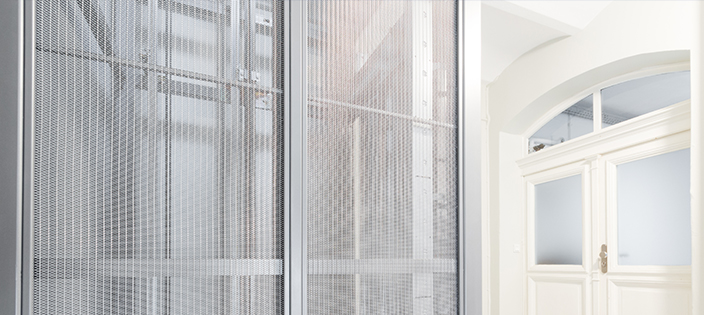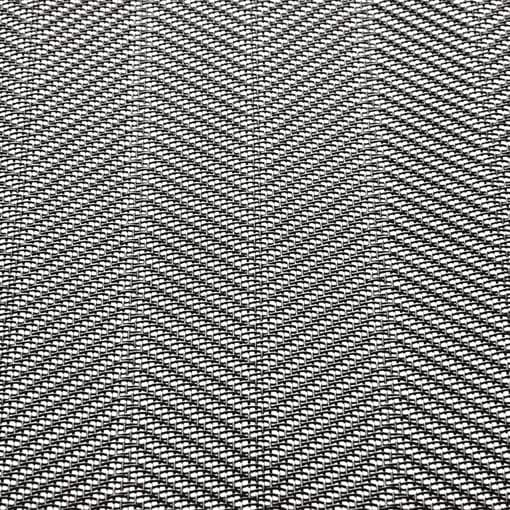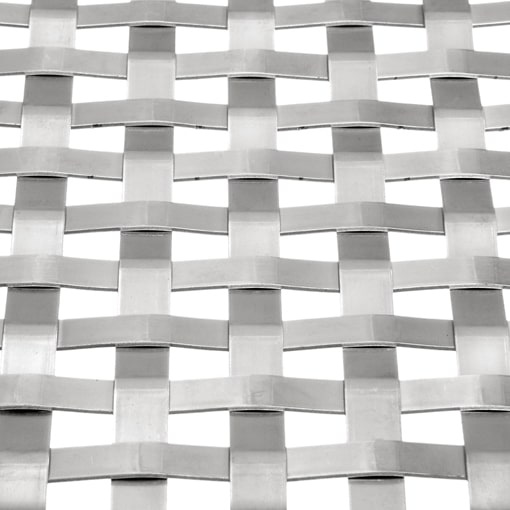Reimagining Elevator Cab Interiors With Metal Mesh Fabric
In the world of architectural design, many secondary structural elements are often overseen. Elevator cabs interiors, for example, commonly have an aesthetic that is not as lustrous as the overall aesthetic of the structure.
That said, when waiting to arrive at the desired floor, visitors have the chance to truly assess the design of the interior of the elevator cab, more so than most of the elements they walk past when traveling through the structure. This can heavily impact the visitor experience.
This is why it is vital for architects to explore various design materials, such as woven metal mesh fabric, to reinvent what elevator cab interiors should look like.
W.S. Tyler aims to use its 20 years of experience to help architects such as yourself leverage the capabilities of woven wire mesh to weave your vision into reality.
With that, this article will encompass:
- What metal mesh fabric is
- How metal mesh fabric is used in elevator cab interior design
- How metal mesh fabric is mounted to elevator cabs
- The benefits of using metal mesh fabric
What Is Metal Mesh Fabric?
Metal mesh fabric is best defined as a network of metallic wires woven together to form decorative wire mesh panels. Running in the vertical and horizontal direction, these metallic wires are typically 300 series stainless steel, providing lustrous and durable qualities.
That said, metal mesh fabric can be woven using a wide range of alloys to best accommodate your architectural design process.
To that end, the customization that architects can achieve with metal mesh fabric makes it stand amongst the other various design materials typically seen within an elevator cab. Parameters such as the mesh pattern, panel size, percentage of open area, and wire diameter are predetermined before the weaving looms are set up.
How Is Metal Mesh Fabric Applied to Elevator Cab Interiors?
In regards to metal mesh fabric in elevator cabs, there are a few ways to incorporate it. In one scenario, the architect of the project specifies which mesh pattern they want to use in the elevator cab(s). They will then contact an elevator cab company that will facilitate the construction and installation of the cab.
This company will contact the mesh supplier to discuss the dimensions and quantities of the mesh panels needed to furnish the interior of the elevator cab. Once the mesh panels are delivered, the elevator cab company will install the mesh panels into the cab based on the architect’s design.
In the other scenario in which metal mesh fabric is incorporated into elevator cab interiors, the mesh supplier works directly with the architect. Typically, the architect has explored several design materials and identity mesh as the ideal material for the inter of their cabs.
Again, the mesh supplier would fabricate the wire mesh panels based on the dimensions and qualities discussed. At that point, the architect would identify a contractor that has experience with woven wire mesh to mount the panels to the elevator cab.
How Is Metal Mesh Fabric Mounted to Elevator Cab Interiors?
As finer metal mesh fabric profiles prove to be very pliable, contractors can often bend the finer mesh patterns at a 90-degree angle at each end and place the panel against a supportive board, such as an MDF board. Both ends of the mesh are again bent at a 90-degree angle, essentially wrapping the supportive board like a present.
 The mesh is stapled on the backside of the board, which helps create the rigidity needed for the mesh to withstand the high volume of traffic that usually passes through an elevator.
The mesh is stapled on the backside of the board, which helps create the rigidity needed for the mesh to withstand the high volume of traffic that usually passes through an elevator.
If you choose to use a more rigid wire mesh pattern, it already has the durability needed to withstand high traffic volumes. This allows contractors to simply place the metal mesh against the supportive board and encapsulate it using a U-channel.
Lastly, the mesh can be bent and fitted into an L-profile frame. This frame is then mounted and would essentially become the wall of the elevator.
Why Use Metal Mesh Fabric Inside an Elevator Cab?
The most noteworthy benefit of using metal mesh fabric is its durability. While various alloys can be used to construct wire mesh panels, an architectural-grade 316 stainless steel is typically used.
The durability provided by the stainless steel will allow the mesh panels to last the lifetime of the elevator cab itself without fading or cracking.
Additionally, the stainless steel construction allows the mesh panels to be cleaned with ease. In fact, most debris can be cleaned by simply wiping the panel with a damp, lint-free cloth.
This includes unsightly graffiti as paints won’t adhere to the stainless steel unless it has the specialized primer used when a design or logo is painted onto the mesh by the supplier.
Another substantial benefit that comes with the integration of metal mesh fabric is its reflective characteristics. As the mesh supplier can cut the mesh panels to accommodate canister lighting systems, architects can incorporate them on both the ceiling and the walls.
As a result, the canister lighting reflects off the mesh creating a brighter, more elegant feel.
Enhance Your Design With a Woven Metal Mesh Fabric Finish
Decorative metal mesh fabric can deliver a unique aesthetic while remaining durable enough to withstand the high amount of foot traffic that elevators commonly endure. This makes it a vital design material when attempting to create a comprehensive visitor experience as elevator cab interiors often lack the design aesthetics seen throughout the rest of the structure.
That said, to ensure your design creates a memorable experience, you should also explore the possibilities that are achievable when a graphic or color is painted or digitally printed onto the mesh panels. Doing so will give the elevator personality while also creating a continuous design throughout the entire structure.
Having helped architects make the most out of decorative meral mesh fabric for over 20 years, W.S. Tyler strives to ensure your design thoroughly and accurately captures your vision.
For more information on how painted and digital printed mesh can benefit your architectural design process, review the following article:
About Ronnie Brown
Ronnie is the Content Writer for W.S. Tyler and has four years of experience as a professional writer. He strives to expand his knowledge on all things particle analysis and woven wire mesh to leverage his exceptional writing and graphic design skills, creating a one-of-a-kind experience for customers.






